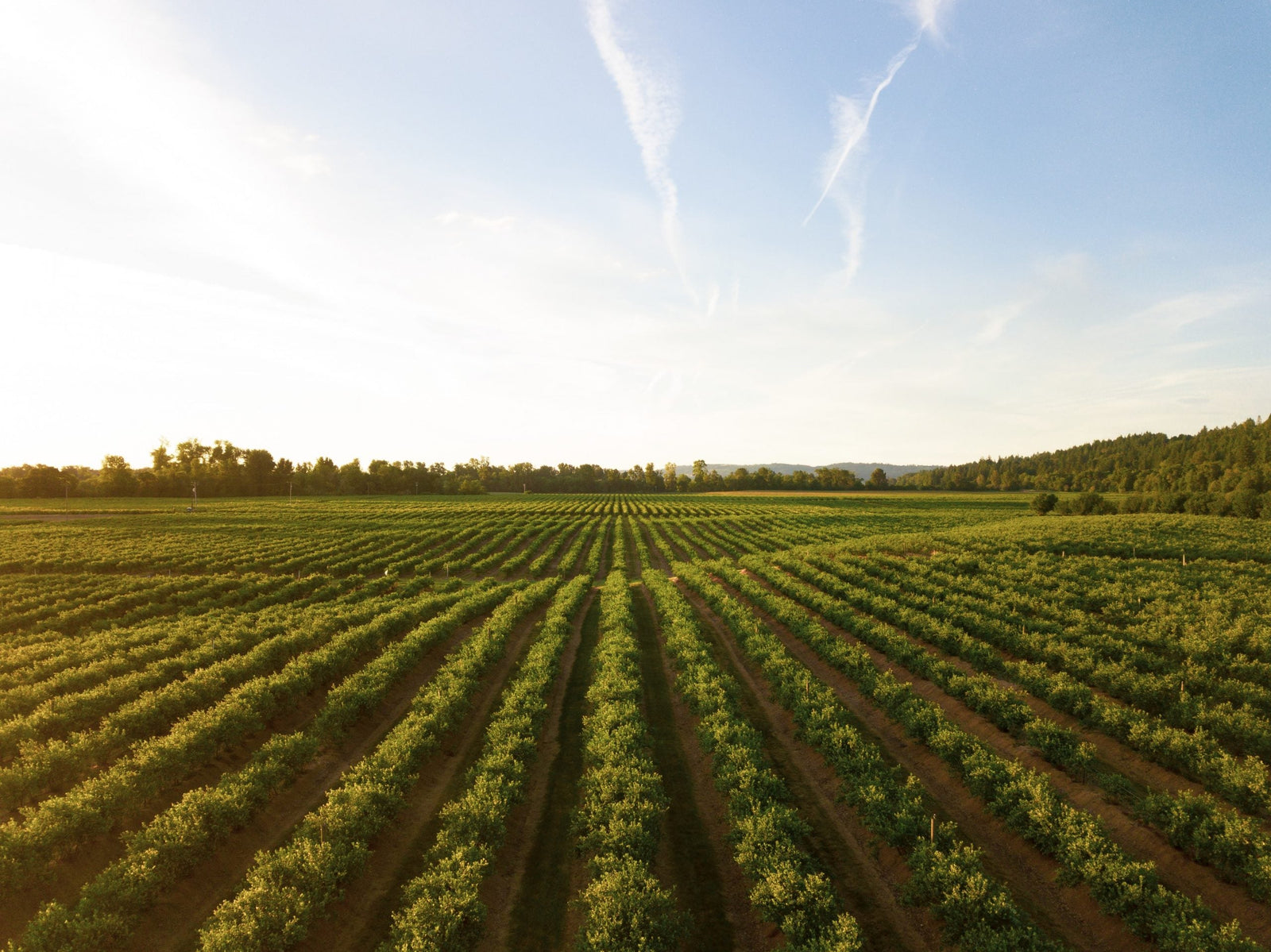Are the bad smells coming from farms and industry harmful?

On my way from my house to the nearest town, there is at least one chicken farm, and one chicken processing plant. On hot days and days where the wind blows over the highway, unpleasant smells make their way into my car, even with the windows up and the air on “recirculate”. I’m grateful not to have to live near these smells, but even so, what is in the air I’m smelling?
One air freshener brand rocketed to popularity when they announced that bacteria were causing the foul smells in our homes. Whether in the bathroom, dirty laundry, or from pets, the feeling was that we were “unsafe” with regular air fresheners that just covered up bad odors instead of eliminating them. Well, it is true that in the bathroom, the “toilet plume” of germs and fecal matter are likely the source of a lot of the smell. (The Consequences of Flushing the Toilet with the Lid Open). What about when I’m driving by a farm or processing plant? Well, sadly that’s true also. Dust from farming and animal processing operations can carry waste particles, which contain harmful bacteria and toxins. Although you’re only passing through this smelly “cloud” as you drive by, it’s even more dangerous for people and farms living downwind of it, getting coated with this dust daily. (What does living near a farm mean? It’s not all cute baby animals)
In particular, a new study found that a 2018 outbreak of Shiga toxin-producing E. coli (STEC) could have originated from a nearby cattle feedlot and been carried in the air to adjacent lettuce fields. The toxic bacteria live happily in the guts of cattle and are shed in their feces, causing the animals no ill health. However, since the FDA is not allowed to enter CAFOs (Concentrated Animal Feeding Operations) to test for pathogens that may cause illness, researchers had to go to great lengths to demonstrate the links between STEC in cattle lot dust and its movement downwind to nearby fields. (How Factory Farm Air Pollution Can Spread Dangerous Bacteria).
With regards to papermills, there is one process that generates most of their stench. Wood is made up of cellulose and lignin. Separating cellulose (used for paper) from the lignin in wood chips generally involves cooking the chips in “digesters” under pressure in a solution of sodium sulfide and sodium hydroxide. The most objectionable smells to local residents and passerbys are ‘total reduced sulfur’ (TRS) compounds released from this process. Similar to the wastewater treatment plant example above, it’s H2S that has the lowest safe threshold, yet is the most detectable smell. These emissions are regulated and can be directed to incinerators and “scrubbers” to clean them out of the atmosphere, but they are not non-detectable with our noses. (Odors from Paper Mills) Additionally, wood can also be bacterially infected, and the air of wood-processing facilities is polluted with the wood-borne Gram-negative bacteria and endotoxins produced by them. The common constituents of these Gram-negative bacteria are potentially pathogenic species of Enterobacteriaceae family of the genera Rahnella, Pantoea, Enterobacter, and Klebsiella, causing inflammatory and potentially infectious diseases in woodworkers. (Timber-colonizing gram-negative bacteria as potential causative agents of respiratory diseases in woodworkers)
With regards to landfills, we all know how smelly they can be. Decomposing food and waste, as well as scavenging wildlife like opossums and seagulls create bacteria, which can float on dust for miles. Landfills can also produce smelly gases like H2S and ammonia, and odorless ones like methane. Here’s a pollutant you might not have realized was in landfill air: toxic PFAS. These are also known as “forever chemicals” because they don’t break down – and are used in a slew of consumer products from nonstick pans to waterproof jackets. Until recently, we didn’t know much about the presence of PFAS in landfill gases. But researchers recently found that landfills release unsafe and concerning levels of PFAS into the air. For people living near landfills, PFAS exposure is a very real health risk as it’s a mix of chemicals linked to cancer, immune system damage, and hormonal disruption. Unlike other gases, these forever chemicals don’t just dissipate – they accumulate in our bodies, making the problem worse the longer we ignore it. (Why Do Landfills Stink?)
With regards to wastewater treatment plants (WWTPs), the main concern is not bacterial but chemical. Yes, there are some bacterial components, but according to a 2023 study, detailed study of odors coming from these plants identified hydrogen sulphide (H2S), ammonia (NH3) and volatile organic compounds (VOCs) as the most common malodorous substances. Sometimes, the concentrations of hydrogen sulphide and ammonia exceed the reference values for some substances in the air (0.02 mg/m3 for H2S and 0.4 mg/m3 for NH3), and even in small concentrations, they have a negative impact on the human body and the environment. For example, In the two WWTPs analyzed, hydrogen sulphide concentrations were in the range of 0–41.86 mg/m3 (Long-Term Exposure Limit for H2S is 7.0 mg/m3), ammonia 0–1.43 mg/m3 and VOCs 0.60–134.79 ppm. The values recognised for H2S cause eye tearing, coughing, olfactory impairment, psychomotor agitation, and swelling of the cornea. (Wastewater Treatment Plants as a Source of Malodorous Substances Hazardous to Health, Including a Case Study from Poland) And, similar to landfills, WWTPs can release PFAs into the air when liquids become aerosols in certain processes, or solids are incinerated.
There are a lot of “dirty jobs” that I am certainly glad NOT to have. Also, the cabin filter in my car is of great comfort against bacteria and microbes, even if the small amount of activated carbon is no longer working against smelly gases. But, and here’s the thing, you don’t know if or when this may happen– carrying a few good respirator masks in the car could help you get through a more extended period of uncomfortable smells, if you get caught in traffic or an accident near one of these sites. (See our article for recommendations). If you happen to live near one of these sites, we would urge you to do your research and see what is really in the smells that are drifting your way, and if it’s merely an annoyance, or a real health concern for you and your family.
Photo by Dan Meyers on Unsplash






